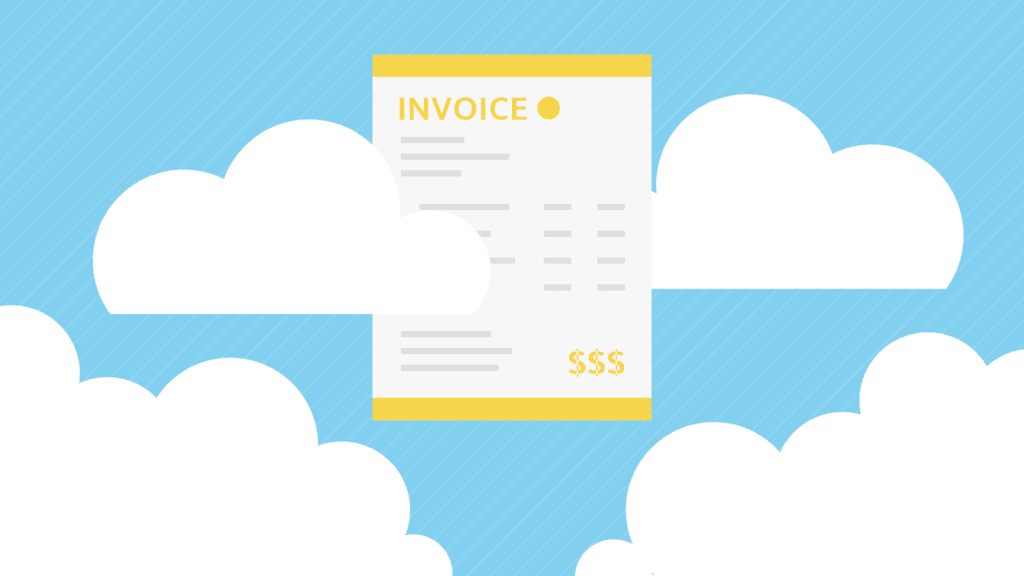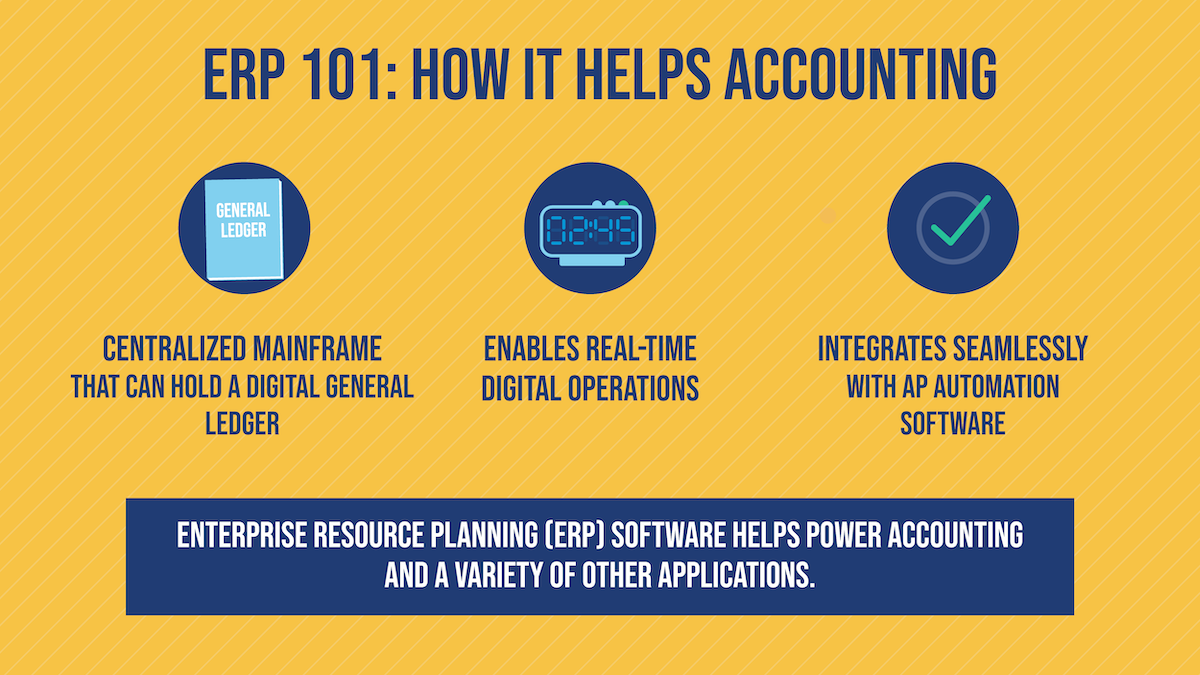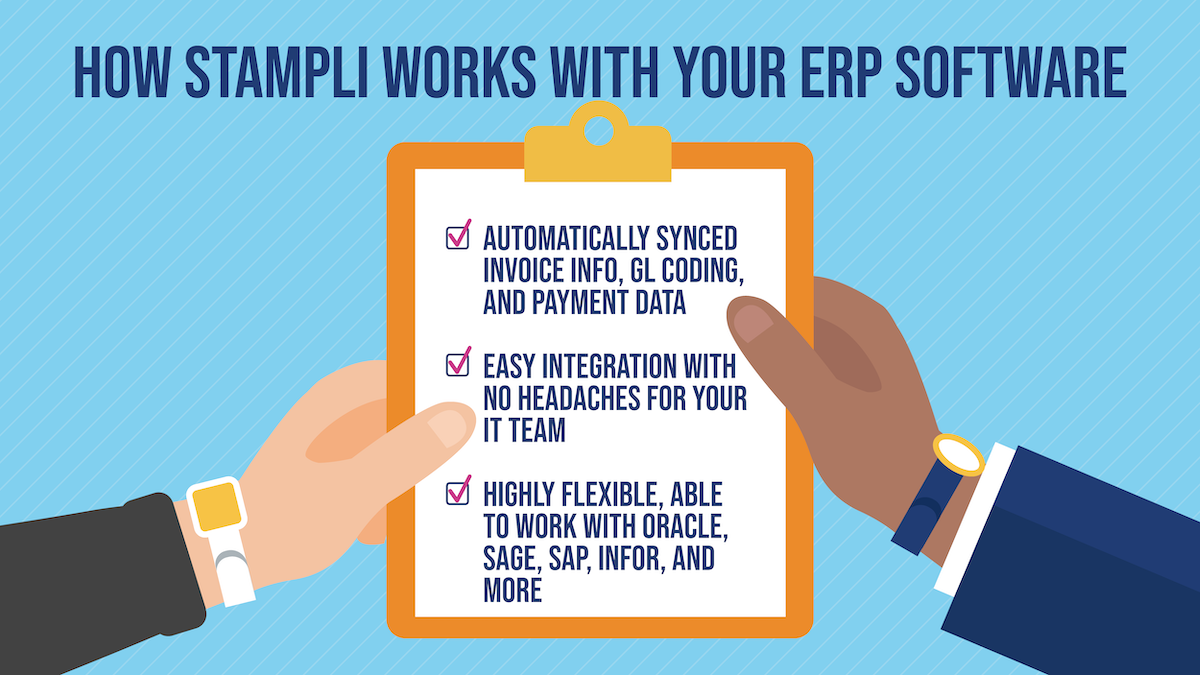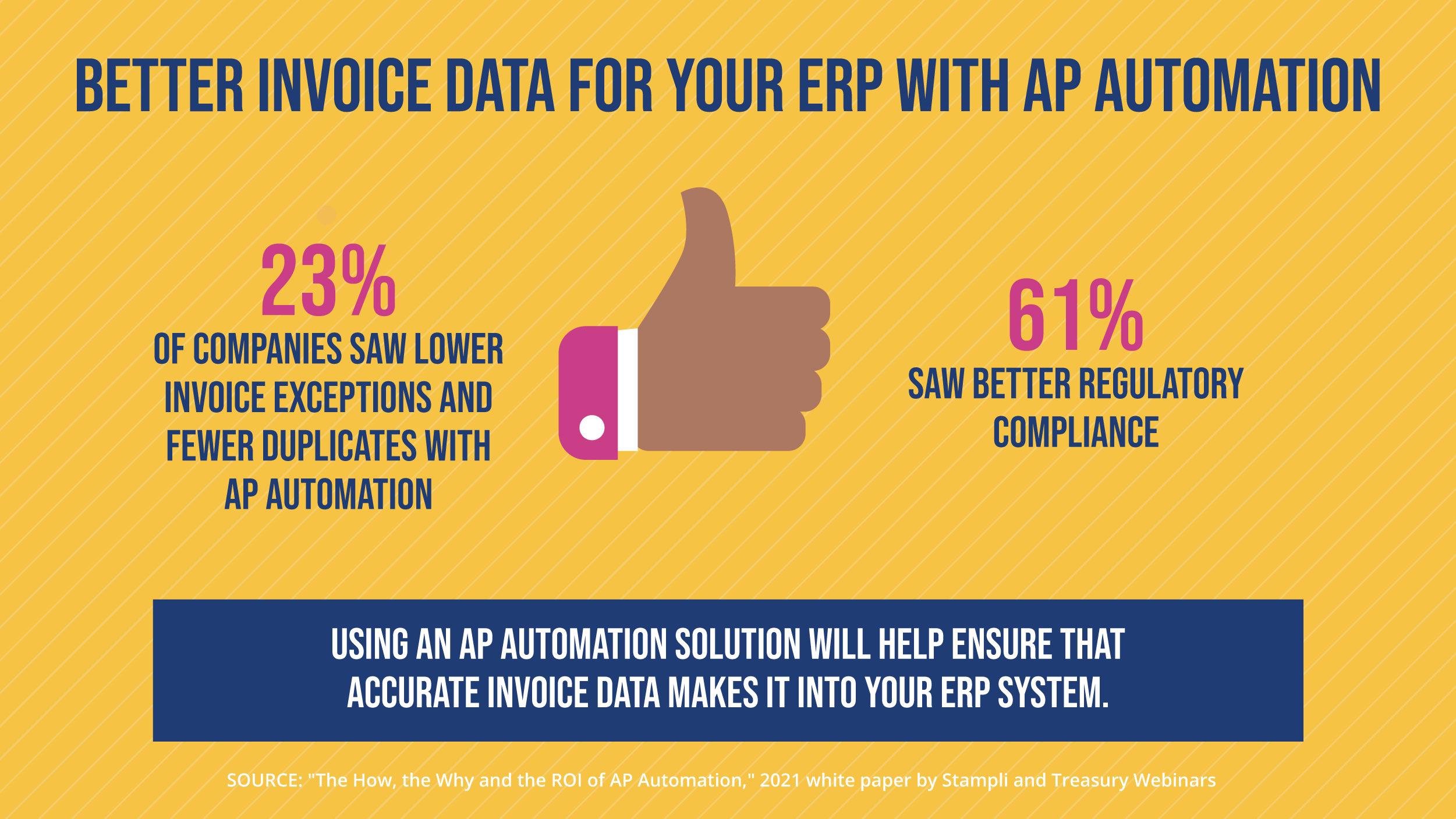AP Automation for Oracle Enterprise Resource Planning Software

As businesses evolve, the smartest companies are looking to find ways to integrate their departmental goals, processes, and technology. When done correctly, this type of collaboration can not only streamline workflows to be more efficient, it can unlock strategic advantages.
Integrating AP automation with Oracle ERP software is a great example of this type of inter-departmental collaboration using technology.
Where once a general ledger was confined to a dusty old book in the accounting department, today it can live in the cloud as part of a broader suite of ERP applications for businesses. When it comes to accounts payable, an integration with an ERP can create more nimble and robust operations, invoice workflow customization, and at the end of the day, better accounting. That said, an ERP on its own won’t ensure accounts payable success—the magic is in the integration with your AP automation platform.
In this post, we’ll explore how (and why) to integrate your AP automation platform with Oracle enterprise resource planning software for a better AP experience. But first, let’s take a closer look at the Oracle ERP from an accounting point of view.
What Does Oracle Offer to Help With Accounting?

ERP software can essentially be thought of as a centralized, digital hub within a company that other applications can connect into. Key features of ERP systems, as CIO magazine notes, include integration with various software systems and databases across enterprises and real-time (or very close to it) operations.
From an accounting perspective, this means ERP systems can be used for cleaner accounting, particularly when it comes to Oracle AP invoice approval workflow customization.
Oracle’s Two Primary ERP Solutions
Oracle is arguably the giant in the ERP world – though far from the only player in the market – Oracle has had two primary offerings in recent years.
Oracle ERP Cloud
This solution goes back four decades to 1977, with SelectHub recently naming it the top provider by market share and noting that it controls 6.09% of the market. It’s not for everyone and is widely known to be complex to operate—it’s most often used by larger firms. But its functionality is top-notch.
Like many tech companies, Oracle has refined this solution around artificial intelligence and other emerging innovations in recent years with SelectHub noting its researchers “…found that the Oracle Adaptive Intelligence apps as well as Oracle Blockchain were the most stand-out features within the system.”
For companies with the budget and internal IT resources to support the system, Oracle ERP Cloud is a superb choice and can lead to seamless Oracle AP invoice approval workflow customization.
Oracle NetSuite
For smaller to mid-market firms, Oracle also has NetSuite, which it acquired in 2016 for $9.3 billion. “Oracle and NetSuite cloud applications are complementary, and will coexist in the marketplace forever,” late Oracle CEO Mark Hurd said in a press release at the time of the purchase. “We intend to invest heavily in both products—engineering and distribution.”
Where NetSuite shines is in bringing companies to the table who might have been left out from having ERP systems in the past. It comes in at a lower price point than some of its major competitors and has the capability to allow Oracle AP invoice approval workflow customization. This ERP system also might be far easier to deploy than on-premises nightmare builds of decades past.
So what does this mean for accounting and accounts payable?
What ERP Platforms Do For Accounting
An ERP system isn’t the same thing as AP automation software, though it can perform some of the same functions.
In essence, an ERP is the virtual brain that enables accounting decisions and Oracle AP invoice approval workflow customization. A company’s general ledger can also reside within either of Oracle’s ERP platforms, making it easy to retain transactional data in the cloud and connecting to the other ERP offshoots.
As BetterBuys explains, the finance and accounting module of an ERP can track a “company’s finances, including budget and expense planning, core accounting, revenue management and tax management.” So there’s some obvious overlap with accounting tools.
But there are also Oracle’s workflow capabilities.
Creating Invoice Approval Workflows in Oracle
Among the perks of Oracle’s ERP systems, users can create “predefined workflows to manage invoice approvals,” as Oracle notes, with superb Oracle AP invoice approval workflow customization.
With each invoice, approver lists are created based on defined rules within the Oracle AP invoice approval workflow customization. Those on the lists then get notifications that their approval is needed, with successive notifications sent out as each approver signs off. The whole process is automated and can move briskly.
This is an important feature within Oracle’s ERP, as invoice approvers can vary widely between transactions — and manual approvals can quickly get bogged down. In fact, Stampli has found through survey data that if respondents could change one thing about the AP process, more than any other, they’d change approval times.
How Stampli’s AP Automation Works With Oracle’s ERP Software

Here’s how Stampli works with the Oracle ERP tools to supercharge your AP workflows.
Oracle NetSuite
For anyone using Oracle NetSuite, there might not be a finer AP automation platform on the market to pair it with than Stampli.
This is due in part to Stampli designing its AP automation solution to Built for NetSuite (BFN) certifications. This translates to a few nifty automation benefits, such as:
- Approve an invoice in Stampli and a vendor bill will automatically create within NetSuite
- Pay an invoice with Stampli Direct Pay and it will also be created in NetSuite
- Stampli will automatically sync GL codes, vendor lists, payment information and much more to NetSuite, helping allow for Oracle AP invoice approval workflow customization
There are also a variety of advanced capabilities between Stampli and NetSuite, such as:
- Payments with vendor credits and early pay discounts applied, via Stampli Direct Pay and updated within NetSuite;
- International transaction accounting for NetSuite OneWorld clients, with Stampli including tax calculations for different countries and supporting multiple currencies;
- Real-time syncing of purchase order information and adjustable line details.
Oracle ERP Cloud
Although Oracle NetSuite is generally considered a great solution for smaller to mid-market businesses, this doesn’t mean Stampli can’t help larger companies. For those firms that have opted for Oracle ERP Cloud, Stampli stands ready to quickly and easily integrate its AP automation solution.
Stampli can sync GL codes, vendor lists, invoices, and payment information to Oracle ERP Cloud with little work or worry for a company’s internal IT team. The goal is collaboration, Oracle AP invoice approval workflow customization, and providing an easy-to-use interface “to smartly and efficiently control the lifecycle of your vendor bills,” as Stampli notes on its Oracle ERP Cloud page.
Using Stampli With Non-Oracle ERPs
Oracle has comprised a large chunk of the ERP market, particularly since its 2016 purchase of NetSuite. That said, it’s not the only major player, with SelectHub recently identifying offerings from SAP, Sage, and INFOR and noting that the rapidly growing market is expected to top $78 billion by 2026. Microsoft Dynamics 365 Finance is another big player in the space.
One thing that sets Stampli apart from other AP automation providers is its flexibility in working with different ERP systems. Thus, it’s no surprise that Stampli can easily integrate with systems from each of the main ERP providers, including Infor, SAP, Sage Intacct, Sage 100, and Microsoft Dynamics 365 Finance.
With each of those ERPs, Stampli offers nearly identical capabilities to what it can do with Oracle ERP Cloud and Oracle NetSuite. As we said, Stampli prides itself on flexibility and working with whatever systems or preferences its partners might have. The last thing Stampli would want to do is try to get a company it works with to change its existing systems simply for the sake of an AP automation platform. (Quite frankly, that’s the mark of a lousy automation solution.)
Three Reasons to Use Stampli With an ERP Platform

An ERP system might be one of the best investments a company can make in the 21st century. Here’s why to make sure to include AP automation in this investment.
1. Assurance Your Invoice Data Will Make it (Accurately) Into the ERP
At the end of the day, invoices will not upload themselves into an ERP system. Thus, continuing to attempt to process invoices by hand and then manually code them into your general ledger within an ERP can lead to some missing data.
On the other hand, Stampli’s AP automation platform uses a bot, Billy, which leverages artificial intelligence, machine learning, and optical character recognition (OCR) to capture data from invoices in real-time. As noted earlier, this data syncs to your GL as soon as it’s in Stampli’s system.
It’s also likely the invoice data that makes it into an ERP will be more accurate. PYMNTS noted in its August 2020 Next-Gen AP Automation Tracker that 84% of respondents in a recent survey were interested in AP automation for its ability to reduce errors. In a 2021 white paper by Stampli and Treasury Webinars, “The How, the Why and the ROI of AP Automation” where 23% of companies that had implemented AP automation reported lower invoice exceptions and fewer duplicates, while 23% reported better regulatory compliance.
2. More Efficient Operations
Companies know that they need better technology to get the next level of operational efficiency. Again, ERP software is a big, big step toward doing this, but without including AP automation, companies might not get everything they need to reach that next level.
One nice thing about Stampli is that it doesn’t require companies to change at all how they’re using their Oracle platforms. Stampli’s just an extra helping hand that will help an ERP system perform that much better.
3. A More Secure ERP Investment
ERP systems don’t come cheaply, that’s for sure, with the average cost per user $7,200 and implementation costs often ranging from $150,000 to $750,000, according to a report. And costs can go much, much higher than this, into the tens or even hundreds of millions of dollars depending on how complex and large of an ERP that a company opts for.
Clearly, when a business commits to implementing an ERP, they should do everything they can to secure the success of that investment. Including AP automation from a solution provider like Stampli in an ERP package will help assure that it operates in peak condition.
Want to see the Oracle/Stampli integration in action? Book a free demo today!